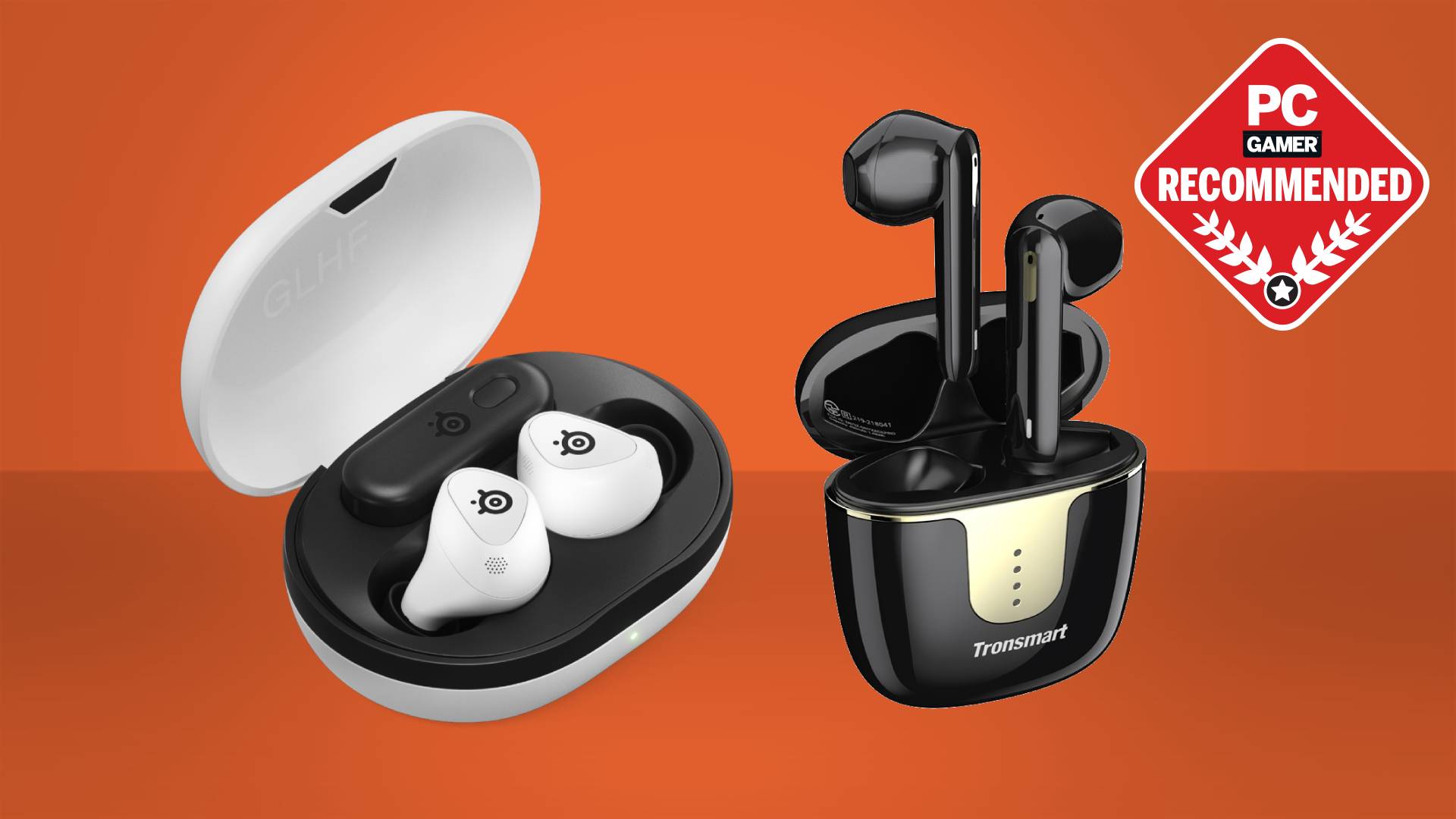
'Widespread theft': The UK government's fifth attempt to push through a bill allowing AI companies to scrape any data they like shut down by the House of Lords
News The UK and US governments seem aligned on letting AI do whatever it wants.





Nightreign is FromSoftware's wildest experiment since the 90's - an intense, co-op remix of Elden Ring with randomized loot, brutal bosses, and unpredictable chaos. Watch as PC Gamer's Tyler Colp takes on this surprising, frustrating, brilliant mess of a battle-royale style RPG and gives his verdict.

PC Gamer discusses the legacy of The Witcher 3, the 2015 RPG that remains one of the PC's most beloved games.

We caught up with Hall recently and enjoyed a wide-ranging discussion on Kitten Space Agency’s development, his gripes with how games are priced and published, the lessons learned from Icarus’ troubled launch, and much more.

Lets dive deep into GTA 6's second trailer to uncover 25 hidden details you might have missed! Beyond the stunning ray-traced reflections and cinematic in-game visuals, we saw glimpses of possible RPG elements and wildlife encounters, character clues, and nostalgic nods. Could Jason's rooftop shoutout be a wink to the 2022 hack? Are weightlifting and fight clubs making a comeback? Join us as we explore everything from Vice City’s modern makeover to beer brands and big cats. Don't forget to comment your favorite hidden moment!

Join us for an in-depth conversation that PC Gamer's Wes Fenlon had with Eric Barone (ConcernedApe) at this years GDC. From Stardew favourites, reflections, and bug fixes, to Haunted Chocolatier's progress, intuitive chocolate making and solo development. If you're a fan of anything remotely Stardew Valley related then this conversation is for you.

Ready to disappear into the shadows? We break down the 11 BEST stealth in games on PC — from iconic assassins to underrated stealth gems that every silent operator needs in their backlog. Whether you’re sneaking through vents, disabling guards, or going full ninja, these games master the art of stealth.

We sat down with Wout van Halderen of Playstack, the publisher behind Balatro, to talk about the continued success the game has seen in 2025, and some of the issues that come along with having a big hit.

YouTuber Rob Scallon has been entertaining us for more than a decade with his light-hearted music-focussed videos. Now he's teamed up longtime contributor Jeff Linville of Ritual Studios to create Fretless: The Wrath of Riffson, a rhythm-focussed, pixel art "GuitaRPG" packed with references to his channel and music culture. Our Features Producer Mollie Taylor recently got to check out the demo and chat to Rob and Jeff about the project, discussing the mechanics, the development, and the famous musicians lending their talents - and their likenesses - to this intriguing game.

ZA/UM, the studio behind 2019 hit Disco Elysium, is hoping to bounce back from recent controversy with its latest game, codenamed Project [C4]. PC Gamer's Ted Litchfield recently got to sit down with writer Siim Sinamäe, better known as “Kosmos”, to discuss [C4] and how they hope to build on Disco to craft a daring and cerebral espionage RPG. Unfortunately, we're not allowed to show any of the gameplay we saw, so we've used clips of ZA/UM's previous game, Disco Elysium, which [C4] appears to iterate on.

This month PC Gamer goes fangs-on with The Chinese Room's revamped World of Darkness RPG, Vampire: The Masquerade – Bloodlines 2, and discover a thrilling, blood-filled, detective noir experience no gamer should miss.

RuneScape: Dragonwilds is an upcoming open world survival game set in the RuneScape universe made by Jagex, creators of one of the most beloved MMOs in history; RuneScape. We sat down with Jake Blunt, Senior Community Manager at Jagex, at GDC 2025 to discuss the lore, challenges, and epic adventures that await in this dangerous region.

2025 is going to be a hell of a year for first-person shooter fans. It's not just that we're getting more new shooters than you can fit in a magazine, but the sheer depth and breadth of what's coming is already beating a quieter 2024.

Assassin's Creed Shadows is finally here. With dual protagonists, a sprawling map, and abundant loot, has Ubisoft managed to improve on the AC games that came before it? What has changed and are these changes for the better or worse? PC Gamer writer Morgan Park is here to answer some of those questions with our review.


Monster Hunter Wilds Review – Bigger, Wilder, Better? Monster Hunter Wilds is Capcom’s first PC and console dual release but does it streamline the formula, deliver seamless battles, and cinematic storytelling? Or does it strip away much of what made past entries like Monster Hunter Rise great?

Kingdom Come: Deliverance 2 is many things; ambitious, peculiar, meticulous, funny. But one thing it never is is boring! Set in 15th century Bohemia, developer Warhorse Studios has gone out of its way to craft a dense and intriguing epic tailored to oddball tastes, especially if you're a system-loving sicko like our News Writer and reviewer, Josh Wolens. The game looks beautiful too, thanks to CryEngine, and scales surprisingly well to a variety of hardware. Could this game be a bona fide Bohemia Rhapsody?

A new graphics card built for silicon austerity and a new era of AI rendering. Here is our Editor-in-Chief of Hardware Dave James to share his verdict.

By Rory Norris last updated
Wild Combos Make the most of Nightreign's poster boy.

By Sean Martin last updated
Rock on Headbutt foes and impress allies with your big rock.

By Tyler Colp last updated
Elementary Cast magic and buff your buddies.

By Harvey Randall last updated
Blade and claw Plant your feet and become the beast.

By Rory Norris last updated
Bird Brain Take the bird-man Guardian to new heights with the right tools for the job.

By Dominic Tarason published
Become enlightened Don't go expecting another multiplayer mega-hit, as solo dev Zeekerss is returning to his roots.

By Shaun Cichacki last updated
Code Goalie Get ready to hit the pitch in this anime-themed soccer game.

By Shaun Cichacki last updated
Solo Style Beat 'em to the punch in the anime combat game with these Arise Crossover codes.

By Shaun Cichacki last updated
Fine & Top up your Ichor supply to explore Gardenview Center.

By Shaun Cichacki last updated
Sharp Bricks Look sharp on the Blade Ball field with the latest codes for free wheel spins and more.

By Harvey Randall published
LAUGH TRACK Whomped in the Lands Between.

By Dave James published
Steam Machine I get why you might not want to go back, but I just made myself a Steam Machine from office bits and it was (eventually) pretty damned easy.

By Rory Norris published
Bugging Out Somehow this bug-based expedition is also one of the most beautiful.

By Dave James last updated
Budding gamers So you finally managed to bag a Steam Deck or ROG Ally, now what are the best gaming earbuds to go with it?

By Jody Macgregor last updated
Small but mighty These are the best indie games you can play on PC.

By Sam Desatoff published
Tainted Love A unique spin on Arthurian legend with bold world design.

By Maddi Chilton published
God games Guardians of Azuma makes good on the time you spend rebuilding the world and finding your place in it.

By Lincoln Carpenter published
bewitchered Thank god, they're making open worlds with character again.

By Andrea Shearon published
📆 And this is the list before Geoff Keighley's big showcase.

By Scott McCrae published
Δ The full intel report on Konami's return to Metal Gear.
Keep up to date with the most important stories and the best deals, as picked by the PC Gamer team.